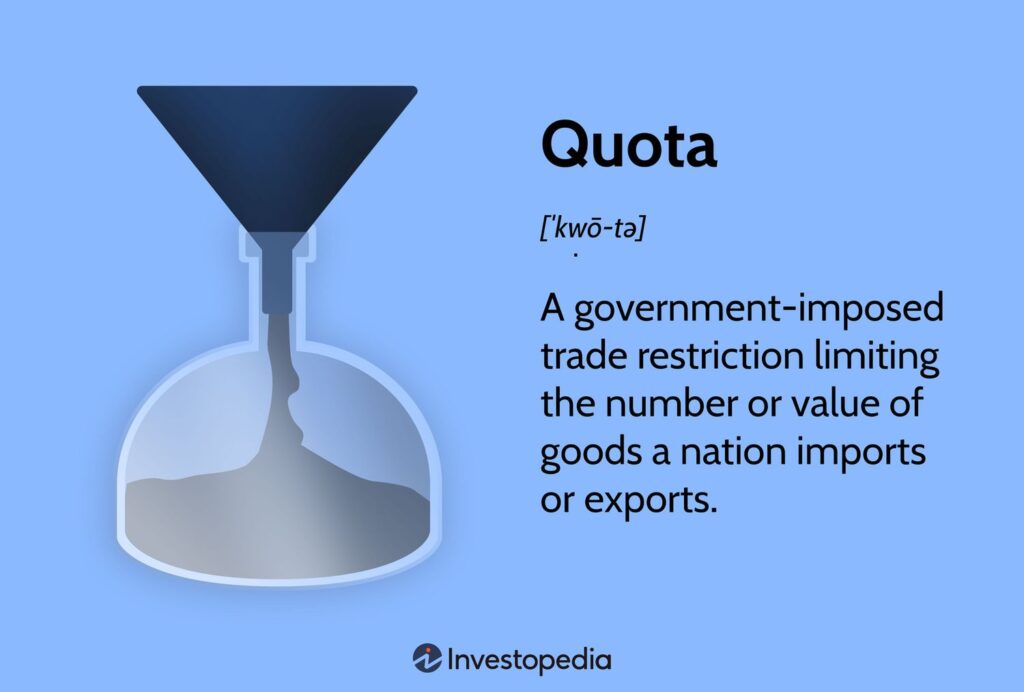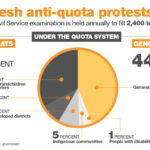A quota limit is a restriction on the amount of resources or activities allowed. It ensures balanced usage of available assets.
Quota limits help manage resources efficiently. They prevent overuse and ensure fair distribution. Businesses, cloud services, and governments often implement quotas. These limits can apply to data storage, API calls, or even sales targets. By setting quotas, organizations maintain control and avoid resource depletion.
Quotas also encourage users to prioritize essential tasks. Properly managed, they enhance productivity and sustainability. Monitoring and adjusting quotas based on needs is crucial. Users benefit from a clear framework and better planning. Thus, quota limits play a vital role in resource management and operational efficiency.

Credit: cloud.google.com
Introduction To Quota Limits
Understanding quota limits is essential in managing resources efficiently. These limits help control the usage of various services and ensure fair access for all users.
Definition
A quota limit is a cap set on the usage of a particular resource. It can be applied to data storage, API requests, or other digital services. Quota limits ensure resources are used within specified boundaries. They prevent overuse and maintain system stability.
Importance
Quota limits play a crucial role in resource management. They help in:
- Preventing abuse: Limits stop users from consuming excessive resources.
- Ensuring fairness: All users get equal access to services.
- Cost control: Companies can manage expenses by limiting resource usage.
- System stability: Limits prevent system overloads and crashes.
With quota limits, resources are used more effectively. This benefits both service providers and users.
Types Of Quota Limits
Understanding quota limits is essential for managing resources effectively. Quota limits help control and allocate resources efficiently. There are different types of quota limits. These are Hard Quotas and Soft Quotas.
Hard Quotas
Hard quotas are strict limits. They prevent resource usage beyond a set point. When a user hits this limit, they cannot use more resources. This type of quota is crucial for maintaining system stability. It ensures no single user consumes all resources. Hard quotas are common in shared environments. They protect resources from being overused.
| Feature | Description |
|---|---|
| Enforcement | Strict |
| Usage | Stops when limit is reached |
| Environment | Shared |
Soft Quotas
Soft quotas are flexible limits. They allow temporary overuse of resources. Users receive warnings when approaching the limit. This type of quota helps users adjust their usage. Soft quotas are useful for non-critical resources. They offer more flexibility than hard quotas. This helps in managing occasional spikes in usage.
- Flexible enforcement
- Allows temporary overuse
- Issues warnings
- Useful for non-critical resources
Common Usage Restrictions
Understanding quota limits is crucial. They help manage resources effectively. There are common usage restrictions to be aware of. These include data caps and API limits. Let’s dive into each of these.
Data Caps
Data caps are limits on the amount of data you can use. They ensure fair usage among all users. Exceeding these caps can lead to extra charges or reduced speeds.
- Monthly Limits: Most service providers set monthly data limits.
- Daily Limits: Some services have daily data restrictions.
- Speed Throttling: Speeds may slow down after reaching a certain limit.
| Plan | Monthly Data Cap | Speed Throttling Limit |
|---|---|---|
| Basic | 50 GB | After 50 GB |
| Premium | 200 GB | After 200 GB |
| Unlimited | Unlimited | Never |
Api Limits
API limits control how often you can call an API. They prevent abuse and ensure server stability. Exceeding API limits can result in blocked requests.
- Rate Limits: Number of API requests allowed per minute.
- Quota Limits: Total number of API requests allowed per day.
- Concurrent Limits: Number of simultaneous API requests allowed.
Understanding these restrictions can help avoid unexpected issues. Always check the documentation of the service you use. This ensures you stay within the allowed limits.
Quota Limits In Cloud Services
Quota limits in cloud services restrict resource usage. They ensure fair distribution. These limits prevent overuse and manage costs. Quotas are essential for cloud efficiency. Let’s explore some common quota limits.
Storage Quotas
Storage quotas control the amount of data you can store. Cloud providers set these limits. Exceeding storage quotas can lead to extra fees. Proper management of storage quotas is crucial.
- Google Cloud: Offers 15GB free storage.
- Amazon S3: Pricing varies by region and usage.
- Microsoft Azure: Storage limits based on subscription.
Check your storage usage regularly. Delete unnecessary files. Use compression to save space. Keep your storage organized.
Compute Quotas
Compute quotas limit the processing power you can use. Cloud providers set these limits too. Compute quotas include CPU and memory. Managing compute quotas optimizes performance.
| Provider | Compute Quota |
|---|---|
| Google Cloud | 32 CPUs per region |
| Amazon EC2 | 20 instances per region |
| Microsoft Azure | 100 vCPUs per subscription |
Monitor your compute usage. Scale resources based on demand. Upgrade your plan if needed. Efficient management reduces costs.
Impact On Users
Understanding quota limits is crucial for all users. These limits can affect various aspects of user experience. Let’s explore how quota limits impact users.
Performance Issues
Quota limits can lead to significant performance issues. When a quota limit is reached, services may slow down. This can result in long loading times and delays. Users may become frustrated with slow response times.
Consider the following table showing the impact on performance:
| Quota Limit Reached | Impact on Performance |
|---|---|
| API Request Limit | Slower data retrieval |
| Storage Limit | Delayed file access |
Cost Implications
Quota limits can also have cost implications. Exceeding limits often leads to extra charges. Users need to be mindful of their usage to avoid unexpected costs. Below are some common cost scenarios:
- Extra charges for additional API calls
- Fees for extra storage space
Users should keep track of their usage. This helps to stay within their quota limits and avoid extra costs.

Credit: helpdesk.recollective.com
Managing Quota Limits
Managing quota limits is crucial for maintaining service efficiency. Knowing how to monitor and request increases helps in optimizing resource usage. This guide will help you understand the essential steps.
Monitoring Usage
Monitoring your quota usage is vital. It ensures you stay within limits. You can use dashboards or tools provided by your service provider. These tools often show real-time usage stats.
- Check usage metrics daily.
- Set up alerts for approaching limits.
- Analyze historical data for trends.
Many providers offer API access for quota usage. This allows automated monitoring. Always ensure your monitoring system is robust and reliable.
Requesting Increases
Sometimes, you need more resources than your current quota allows. In such cases, requesting a quota increase is essential.
- Identify the specific quota you need increased.
- Gather data to justify the need for an increase.
- Submit a request through your provider’s portal.
Most providers have a formal request process. They may ask for usage data or business justification. Be prepared to provide detailed information to support your request.
| Step | Action |
|---|---|
| 1 | Identify specific quota |
| 2 | Gather supporting data |
| 3 | Submit request |
After submitting, follow up if there is a delay. Ensure you have a contingency plan if the request is denied.
Best Practices
Understanding quota limits is crucial for managing resources efficiently. Following best practices ensures that quota limits are maintained properly. This section highlights the best practices for handling quota limits effectively.
Efficient Resource Usage
Efficient resource usage is key to staying within quota limits. Monitor resource consumption regularly. Identify areas where resources are underutilized or overused.
- Optimize your applications to use resources efficiently.
- Implement caching to reduce repeated tasks.
- Use scalable solutions to handle varying loads.
- Set alerts for nearing quota limits.
Efficient resource usage helps in maintaining performance. It also prevents sudden overages.
Regular Audits
Regular audits ensure that resource usage stays within quota limits. Conduct audits periodically to catch any anomalies early.
- Create a schedule for regular audits.
- Use automated tools to track resource usage.
- Review historical data to identify trends.
- Prepare reports to document findings.
Regular audits provide insights into resource consumption patterns. This helps in making informed decisions about resource allocation.
| Best Practice | Benefit |
|---|---|
| Efficient Resource Usage | Maximizes performance, prevents overages |
| Regular Audits | Early anomaly detection, informed decisions |
Credit: discussions.apple.com
Future Trends
The concept of quota limits is evolving rapidly. Businesses are adopting new technologies to manage resources efficiently. Here are some future trends in quota limits.
Dynamic Quotas
Dynamic quotas are the future. They adjust based on real-time data. This ensures optimal resource allocation.
- Real-time monitoring of resources
- Automatic adjustments based on usage
- Improved cost efficiency
Dynamic quotas prevent overuse or underuse of resources. They can adapt to changing demands quickly.
Predictive Analytics
Predictive analytics use data to forecast future needs. This helps in setting more accurate quota limits.
- Analyze past usage data
- Predict future resource demands
- Set proactive quota limits
Predictive analytics minimize resource wastage. They ensure resources are always available when needed.
| Feature | Benefit |
|---|---|
| Real-time Monitoring | Immediate adjustments |
| Automatic Adjustments | Reduced manual intervention |
| Data Analysis | Accurate predictions |
The future of quota limits is bright. Businesses will benefit from these advanced technologies.
Conclusion
Understanding quota limits is essential for managing resources effectively. They help ensure fair usage and prevent overconsumption. By knowing your quota limits, you can optimize performance and avoid penalties. Stay informed and regularly check your usage. This proactive approach will help maintain system efficiency and reliability.



